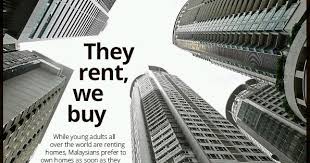Singapore sweep continues
Republic’s real estate hunters snapping up houses outside Penang’s heritage enclave.
GEORGE TOWN: Singaporean real estate hunters with a taste for prewar properties in Penang are still on buying sprees, says an NGO.
They are snapping up houses that are located just outside the state’s heritage enclave as these properties are not accorded heritage protection by Unesco, according to George Town Heritage Action.
The biggest buyer appears to be World Class Land (WCL), which is building the tallest residential skyscraper in the planet’s southern hemisphere.
Called Australia 108 because of its 108 storeys, the Melbourne development is expected to be completed in 2019.
WCL has since December 2013 reportedly snapped up 236 prewar houses in Penang, totalling more than 250,000sq ft – the equivalent of 26 football fields.
Recently, it applied to build a 46-storey condominium tower in Gurdwara Road, just 200m from Komtar after buying 37 prewar properties in that area.
Its latest block buy appears to be 26 prewar houses on Penang Road and Bertam Lane, also across from Komtar.
The properties were owned by six descendants of Tunku Kudin (1835- 1909), the great grand uncle of the late first prime minister, Tunku Abdul Rahman Putra Al-Haj, for nearly 100 years.
The offer from WCL was about RM980 per sq ft, totalling RM21mil.
Tengku Abdullah Tengku Mahadi, 61, who collected the monthly rent from the tenants on behalf of his 92-year-old father, said the deal was sealed in Thailand through one of the six heirs who spoke for all of them.
“All the heirs are in their late 80s and 90s. It will cost too much to develop the land ourselves.
“We didn’t really feel like selling. We know the new owner will change the whole place but we are all old and don’t want to stand in the way of development,” he told The Star.
He said the heirs only earned about RM50 per month from each unit when the Rent Control Act was in force.
After it was repealed in 1997, they raised the rent to about RM600 and it had stayed the same since.
WCL lawyers have sent eviction notices to the 60-odd tenants who have until end November to move out.
A subsidiary of Aspial Corporation Ltd, WCL has completed many projects in the island republic and Australia.
Aspial chief executive officer Koh Wee Seng is listed by Forbes this year as the 43rd richest man in Singapore.
George Town Heritage Action has been vociferously against the state government’s apparent lack of control over the alleged WCL buying sprees.
“This company’s business model is to buy the properties, evict the tenants, renovate or rebuild, and then drastically increase rentals,” said its co-founder Mark Lay.
At a press conference yesterday, he showed a list of 236 properties purportedly bought by WCL through several subsidiaries.
Totalling more than 250,000 sq ft, these include rows of old houses along 19 roads, including Dato Keramat, Macalister, Transfer and much of the Seven Streets precinct (known locally as Chit Tiau Lor) near Komtar.
Lay warned that if the state government allowed “one company to accumulate more than 230 prewar houses, it will kill diversity and people’s moral rights to the city”.
“Our concern is also socio-cultural. Any company can damage the fabric of George Town when they have a monopoly,” he added.
In June, The Star reported that Singaporean companies typically raise rentals by 400% to 500% after sprucing up the old houses.
In response, Penang Town and Country Planning Committee chairman Jagdeep Singh Deo had said that the state cannot interfere with free enterprise.
By Arnold Loh The Star/ANN
Penang residents see red over Singaporeans snapping up properties
GEORGE TOWN: Public anger in the state is on the rise as Singaporeans continue to buy up pre-war houses here by the blocks.
NGOs and netizens are reacting negatively following The Star Online’s Facebook posting of the news yesterday.
Many are calling for stricter measures to limit foreign buying, but Penang Citizens Chant Group legal adviser Yan Lee warned that it would be useless as foreigners could sidestep such restrictions by simply forming Malaysian shell companies with local directors who are proxies or trustees.
“The corporate veil will shield them from these simple stop-gap measures. Instead, these measures end up keeping out individual foreigners who earnestly want to own property here because they just want to live in Penang.
“The Penang government is more concerned about collecting development charges. The more it allows development, the more money it collects,” he lamented.
Yan Lee was commenting on cooling measures here since 2012 that prevent foreigners from buying landed property of less than RM2mil on the island and RM1mil on the mainland.
For stratified property, the cap is not less than RM1mil both on the island and the mainland.
There is also a state approval fee of 3% over the purchase price.
State Town and Country Planning Committee chairman Jagdeep Singh Deo said in a statement yesterday that statistics had shown that these measures had reduced foreign buying of Penang property by about 50% since 2013.
George Town Heritage Action held a press conference on Thursday to reveal that Singapore developer World Class Land (WCL) had acquired 236 pre-war houses in and around the heritage zone totalling about 250,000sq ft, equal to 26 football fields.
According to the annual report of WCL’s parent company, Aspial Corporation Ltd, the properties are held by six Malaysian companies – WCL (George Town) Holdings, WCL (Magazine), WCL (Macallum), WCL (Noordin), WCL (Bertam R) and WCL (Bertam L).
In the Companies Commission of Malaysia’s online portal, there are also company records of WCL (Malaysia) and WCL (Penang).
By Arnold Loh The Star/ANN
Related posts:

Oct 30, 2010
... When I first set eyes on
Penang, my first impression was green ... Thus, if the
Northern Corridor can escape the
middle income trap, then, ...

Feb 29, 2016 ... GEORGE TOWN: Penang has now overtaken the Klang Valley as the most
attractive place for property investment. In its Malaysia Commercial ...

Jun 5, 2016 ... WHILE the property market in Malaysia may be subdued, Penang is still
generating ..... Penang is best for property investment in Malaysia .

Aug 18, 2016
... KUALA LUMPUR:
Malaysia is
no longer stuck in the
middle-
income trap, as its
gross national income (GNI) is now progressively growing ...











































 Little Singapore expanding: At least 26 prewar houses at Lorong Bertam in George Town are the latest to be snapped up by a Singapore company
Little Singapore expanding: At least 26 prewar houses at Lorong Bertam in George Town are the latest to be snapped up by a Singapore company
